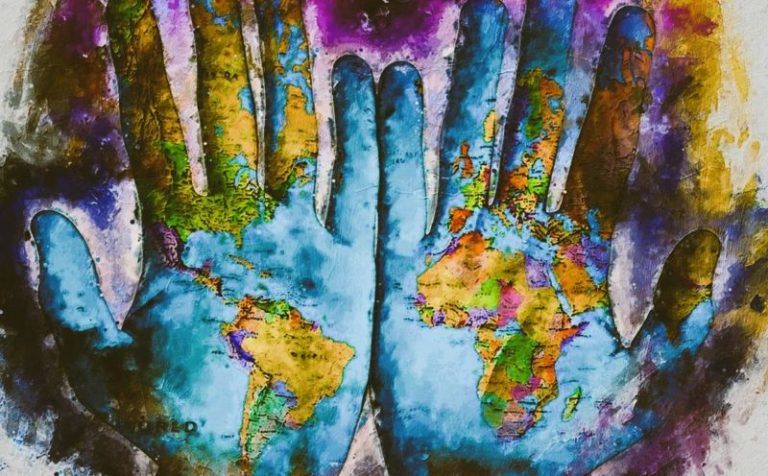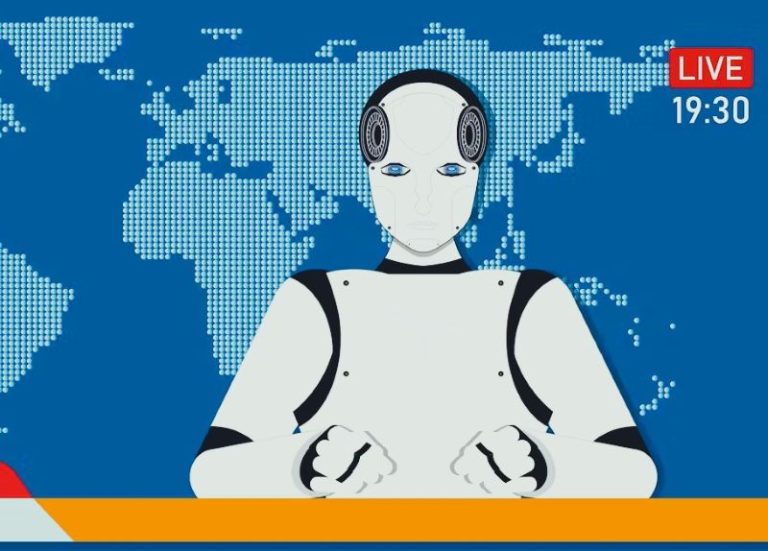
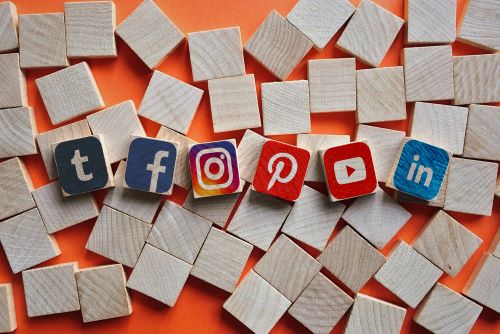
The desire to be seen, heard, and understood.

By Matthew A. McIntosh
Public Historian
Brewminate
Introduction: The Medium IS the Message
In the 1960s, Marshall McLuhan’s aphorism, “the medium is the message,” pointed to a then-radical idea: that the nature of the medium shaping communication can matter more than the content it conveys.¹ In our time, social media platforms like Twitter (now X), Instagram, TikTok, and Facebook embody this principle to an unprecedented degree. The way we interact on these platforms often dictates not just how we communicate, but what we consider worth communicating. Content, tone, timing, and even personality are all shaped by the demands and affordances of the medium.
Social media demands immediacy and visibility. The architecture of platforms rewards content that generates engagement—likes, shares, comments—over careful reflection.² The result is a culture in which communication is often driven by performative urgency. Whether through trending hashtags, viral memes, or short-form videos, the speed at which messages are disseminated encourages reactive rather than reflective discourse.
Moreover, social media transforms interpersonal communication into a form of public spectacle. Where once conversations were private or semi-public, now they are frequently conducted in performative public arenas.³ Even direct messages carry the weight of a potential screenshot. The medium amplifies the performative aspect of identity, where users feel pressure to curate not just opinions but personas that “fit” the platform.
McLuhan’s insight finds new urgency in this context. Social media is not merely a channel through which communication flows—it actively shapes, distorts, and conditions the nature of that communication. Understanding this dynamic is essential for navigating the complexities of human connection in the digital age.
From Letters to Likes: A Brief Evolution
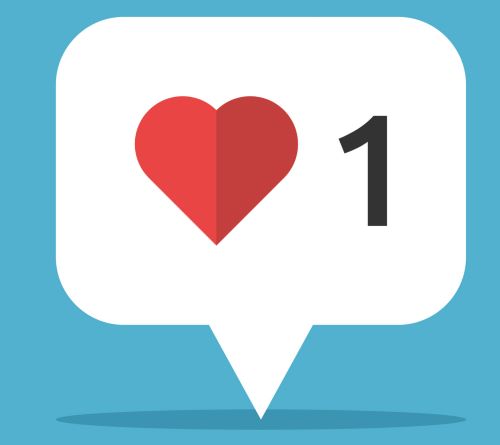
Human beings have always adapted their communication to the available technology of their era. From the cave paintings of Lascaux to handwritten letters and, later, the Gutenberg printing press, each innovation expanded the reach and pace of human expression. These changes unfolded over centuries. By contrast, the rise of the internet—and social media in particular—has reshaped communication within a single generation.⁴ The pace of change has been staggering.
Unlike previous forms of communication, which tended to be asynchronous and slower-paced, social media introduced a constant stream of real-time interaction.⁵ Platforms like Twitter and Facebook allow for near-instantaneous messaging with a global audience. This shift has collapsed traditional boundaries of time and geography. A message written in New York can be read in Nairobi a second later, transforming how we think about audience, scope, and response. This unprecedented access to a global audience has also spurred new strategies for quickly expanding one’s perceived reach and influence online. In this context, the option to buy followers has become a debated practice for individuals and brands aiming to rapidly amplify their digital presence.
In this digital evolution, the old hierarchies of publishing and broadcasting have been disrupted. No longer must one secure a publisher, a newspaper column, or a radio station to reach an audience. Anyone with a smartphone and internet access can produce and share content with the potential to go viral. This democratization of expression is one of social media’s most revolutionary impacts, though not without unintended consequences.⁶
With the barrier to entry so low, the volume of voices has increased exponentially. This creates both richness and noise—more perspectives, but also more misinformation, redundancy, and conflict.⁷ The shift from letters to likes marks not just a technological transition, but a transformation in the very texture of human communication, from considered reflection to instantaneous performance.
Speed over Substance?

One of the defining features of social media communication is its relentless speed. The timeline never sleeps, and neither do the notifications. This sense of urgency promotes a communication style that is often fast but shallow.⁸ In many ways, this mirrors the broader culture of immediacy that defines our era—fast news, fast fashion, fast reactions. But speed often comes at the cost of depth.
Rapid communication discourages complex thought. It is difficult, if not impossible, to articulate nuanced positions within the character limits of a tweet or the 15-second constraint of a TikTok video.⁹ As a result, important conversations are often reduced to catchphrases or slogans. Users are incentivized to provoke, not persuade; to react, not reason. Substance is sacrificed on the altar of immediacy.
This dynamic also shapes our expectations of one another. In professional and personal contexts alike, people increasingly expect immediate responses to messages. The pressure to remain “always on” can erode boundaries, blur work-life distinctions, and heighten anxiety.¹⁰ When everyone is expected to be reachable at all times, the space for intentional, meaningful conversation diminishes.
Furthermore, the fast pace can foster volatility in public discourse. Trends and controversies rise and fall in hours, sometimes ruining reputations before facts can emerge.¹¹ Thoughtful deliberation is drowned out by the need to “weigh in” quickly. Social media platforms, optimized for rapid exchange, tend to reward hot takes over sustained analysis—an environment ill-suited for the cultivation of truth.
The Rise of Visual Rhetoric
In the social media age, images often speak louder than words. Visual communication—once subordinate to text—is now dominant. Photos, GIFs, emojis, and short videos are the new lexicon of the digital world. Platforms like Instagram and TikTok are almost entirely visual in nature, reflecting a shift in communication that privileges image over argument.¹²
This rise of visual rhetoric has benefits and drawbacks. On one hand, visuals are powerful tools for evoking emotion, illustrating complex ideas, and transcending linguistic barriers. A single image can capture a moment more poignantly than a paragraph ever could.¹³ On the other hand, images can also mislead, manipulate, or oversimplify. The curated photo may mask a deeper truth, while the viral video may lack context.
As communication becomes more visual, self-expression often becomes performative. Social media users are not merely sharing their lives—they are producing visual narratives designed to generate approval. Filters enhance appearances, angles are carefully chosen, and captions are crafted for maximum impact. The line between authenticity and performance becomes blurred, if not erased entirely.¹⁴
Moreover, visual communication can obscure the deeper structure of meaning. Images may resonate emotionally but bypass critical reasoning. A meme can be funny and shareable without being true.¹⁵ This creates fertile ground for misinformation to flourish, particularly when visual content is designed to provoke a visceral response. As our communication becomes more image-based, we must ask whether we are seeing more—or simply seeing less clearly.
Algorithmic Amplification and Echo Chambers

Social media platforms are not neutral public squares—they are algorithmically curated environments. The content we see is selected not by editorial boards or chronological order, but by opaque formulas designed to maximize engagement.¹⁶ These algorithms often favor what is popular, emotionally charged, or polarizing. In doing so, they shape not only what we read, but what we believe.
The echo chamber effect arises when these algorithms reinforce preexisting beliefs by showing users content that aligns with their interests and biases.¹⁷ Over time, this narrows the range of perspectives individuals are exposed to, creating a feedback loop that can intensify ideological divisions. People begin to perceive their view of the world as normative, while dissenting voices are filtered out or vilified.
This phenomenon has significant implications for democratic discourse. Civil disagreement—a vital part of a healthy public sphere—becomes increasingly rare. Instead, users are siloed into ideological tribes, where opposing viewpoints are caricatured or dismissed outright. Dialogue turns into confrontation, and compromise becomes an alien concept. In this way, the structure of social media subtly undermines the conditions for constructive communication.¹⁸
Moreover, algorithmic amplification can elevate misinformation. Falsehoods that trigger strong reactions often spread faster than verified facts.¹⁹ This distorts public understanding and erodes trust in traditional sources of knowledge. As a result, communication becomes not a search for truth, but a battle for attention. Without accountability or transparency in how content is prioritized, users are left navigating an informational Wild West.
New Norms, New Misunderstandings
The advent of social media has introduced new social norms—many of which are unspoken, inconsistent, or evolving. For instance, what does it mean when someone leaves your message on “seen”? Is a comment without a like a snub? Should one reply to every group message or just the last?²⁰ These ambiguities often generate unnecessary stress and confusion.
In traditional face-to-face interactions, tone, body language, and facial expressions provide vital context. In text-based digital communication, these cues are missing or minimal.²¹ Emojis and punctuation have become proxy indicators, but their interpretations vary across cultures and individuals. A period at the end of a sentence may seem neutral to one person but passive-aggressive to another.
These new dynamics complicate relationships. Friendships, romances, and workplace connections are increasingly mediated through apps and messages. This mediation can distort intent, escalate conflict, or foster misunderstandings. A message sent in haste or jest may be received as offensive or cold.²² Miscommunication is not just common—it is structurally embedded in the format.
Furthermore, the expectation of constant availability can be emotionally draining. The pressure to respond promptly or to perform online engagement—liking, commenting, reposting—can feel obligatory. Failure to comply may be interpreted as disinterest or rejection.²³ Thus, communication in the digital era is not just a tool but a terrain, filled with new risks and uncharted etiquette.
Activism or Slacktivism?
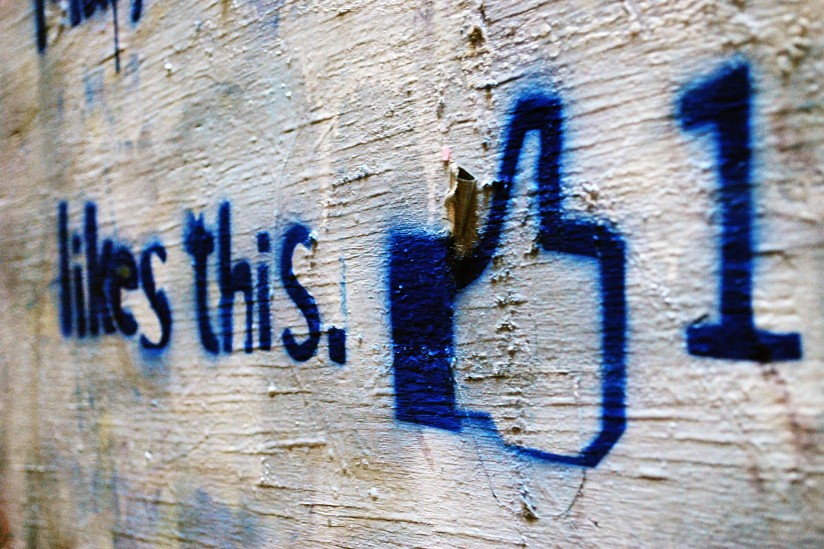
Social media has undeniably become a force for political and social mobilization. From the Arab Spring to #MeToo, digital platforms have enabled grassroots movements to gain traction, amplify marginalized voices, and bypass traditional gatekeepers.²⁴ Activists can now organize protests, raise funds, and spread information globally in minutes. In this sense, social media represents a democratizing force.
However, the same mechanisms that enable meaningful activism also encourage slacktivism—low-effort participation in social causes with minimal real-world impact.²⁵ Users may feel morally satisfied by posting a hashtag, changing a profile picture, or sharing a viral graphic without engaging deeper. The illusion of action replaces genuine commitment, and visibility is mistaken for virtue.
This dynamic is especially concerning when activism becomes performative. Influencers and brands often capitalize on social movements for clout, engagement, or profit, diluting the message in the process.²⁶ Movements risk being commodified, and messages reduced to marketing slogans. The line between solidarity and self-promotion becomes dangerously thin.
True activism requires sustained effort, risk, and accountability—qualities often at odds with the fast-paced, attention-driven logic of social media. While platforms can be powerful tools for change, they are not substitutes for community-building, policy engagement, or critical thought. To harness their potential fully, users must navigate the difference between awareness and action.²⁷
Mental Health and Communication Fatigue
Social media communication comes with an invisible cost: the psychological toll of constant connectivity. Notifications, alerts, messages, and updates compete for attention at all hours.²⁸ This incessant stimulation can lead to anxiety, distraction, and reduced capacity for deep thinking or emotional rest. Users often feel tethered to their devices, unable to disengage.
Communication fatigue is a growing concern. Managing dozens of message threads, group chats, emails, and app notifications creates a persistent low-level stress. The emotional labor of maintaining digital relationships—particularly across platforms—can become overwhelming.²⁹ For some, the very idea of checking messages feels exhausting.
The problem is exacerbated by comparison culture. Social media platforms often present curated versions of other people’s lives, inviting self-criticism and envy.³⁰ When communication is reduced to highlight reels, people may feel inadequate or excluded. The gap between digital projection and lived experience can widen, leading to loneliness, imposter syndrome, and depression.
To mitigate these effects, many users are adopting “digital hygiene” practices—setting boundaries, turning off notifications, or taking intentional breaks. Yet the pressure to remain visible and responsive remains strong.³¹ Until social media culture shifts toward valuing quality of communication over quantity, the mental health cost will remain a persistent concern.
The Future of Communication
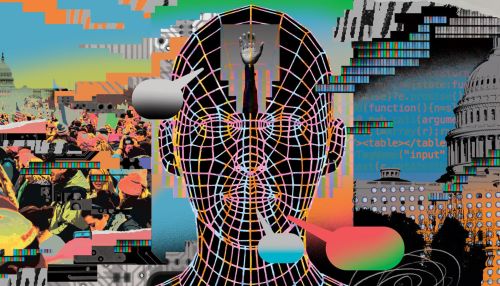
Despite its challenges, social media is not inherently negative. Like all technologies, its ethical impact depends on how it is used and designed.³² There are promising signs of a cultural shift—platforms experimenting with slower forms of engagement, increased user control, and healthier digital norms. These efforts may mark the beginning of a more intentional communication landscape.
Developments in digital literacy education can also help users navigate these platforms more critically. Understanding how algorithms work, how misinformation spreads, and how to manage digital boundaries are essential skills in the modern age.³³ A more informed user base can exert pressure on platforms to prioritize ethical design and user wellbeing.
Emerging technologies such as decentralized social networks and AI-driven moderation tools may offer alternative models. These platforms could prioritize transparency, community governance, and content quality over engagement metrics.³⁴ In such ecosystems, communication might be guided less by metrics and more by meaning.
Ultimately, the future of communication will be shaped not just by platforms and policies, but by our collective cultural choices. We must ask what kind of connection we truly want: frictionless expression or authentic dialogue? More followers or deeper understanding? The answers will determine the trajectory of communication in the decades to come.
Conclusion: Reclaiming Our Voices
In a world saturated by messages, reclaiming the value of meaningful communication is a radical act. The rise of social media has connected us in ways previously unimaginable—but it has also fragmented attention, muddled tone, and commodified self-expression.³⁵ Navigating this duality demands intention, literacy, and reflection.
We must learn to distinguish between noise and dialogue, between presence and performance. Not every message needs to be posted, nor every thought shared in real time. Resisting the impulse to react instantly can create space for reflection and empathy—qualities essential for true connection.
At the heart of communication lies a simple yet profound truth: the desire to be seen, heard, and understood. Technology can facilitate this, but it cannot replace the human virtues that give communication its moral and emotional weight—patience, listening, humility, and care. The social media era may have changed the terrain, but the fundamental principles of communication remain. If we can harness these platforms with wisdom and integrity, we can still build bridges across difference and meaning in a noisy world. The choice is ours.
Appendix
Endnotes
- Marshall McLuhan, Understanding Media: The Extensions of Man (Cambridge, MA: MIT Press, 1994).
- Jaron Lanier, Ten Arguments for Deleting Your Social Media Accounts Right Now (New York: Henry Holt and Co., 2018).
- Sherry Turkle, Reclaiming Conversation: The Power of Talk in a Digital Age (New York: Penguin Press, 2015).
- Tom Standage, Writing on the Wall: Social Media – The First 2,000 Years (New York: Bloomsbury, 2013).
- Clay Shirky, Here Comes Everybody: The Power of Organizing Without Organizations (New York: Penguin Books, 2009).
- Siva Vaidhyanathan, Antisocial Media: How Facebook Disconnects Us and Undermines Democracy (New York: Oxford University Press, 2018).
- Eli Pariser, The Filter Bubble: What the Internet Is Hiding from You (New York: Penguin Press, 2011).
- Byung-Chul Han, In the Swarm: Digital Prospects (Cambridge, MA: MIT Press, 2017).
- Nicholas Carr, The Shallows: What the Internet Is Doing to Our Brains (New York: W. W. Norton & Company, 2010).
- Cal Newport, Digital Minimalism: Choosing a Focused Life in a Noisy World (New York: Portfolio, 2019).
- Zeynep Tufekci, Twitter and Tear Gas: The Power and Fragility of Networked Protest (New Haven, CT: Yale University Press, 2017).
- Henry Jenkins, Sam Ford, and Joshua Green, Spreadable Media: Creating Value and Meaning in a Networked Culture (New York: NYU Press, 2013).
- Nicholas Mirzoeff, How to See the World (New York: Basic Books, 2016).
- Jill Walker Rettberg, Seeing Ourselves through Technology: How We Use Selfies, Blogs and Wearable Devices to See and Shape Ourselves (New York: Palgrave Macmillan, 2014).
- Claire Wardle and Hossein Derakhshan, “Information Disorder: Toward an Interdisciplinary Framework for Research and Policymaking,” Council of Europe Report, 2017.
- Vaidhyanathan, Antisocial Media.
- Pariser, The Filter Bubble.
- Turkle, Reclaiming Conversation.
- Wardle and Derakhshan, “Information Disorder.”
- Turkle, Reclaiming Conversation.
- Rettberg, Seeing Ourselves through Technology.
- Turkle, Reclaiming Conversation.
- Newport, Digital Minimalism.
- Tufekci, Twitter and Tear Gas.
- Lanier, Ten Arguments for Deleting Your Social Media Accounts.
- Jenkins, Ford, and Green, Spreadable Media.
- Tufekci, Twitter and Tear Gas.
- Newport, Digital Minimalism.
- Han, In the Swarm.
- Mirzoeff, How to See the World.
- Lanier, Ten Arguments for Deleting Your Social Media Accounts.
- Shirky, Here Comes Everybody.
- Pariser, The Filter Bubble.
- Jenkins, Ford, and Green, Spreadable Media.
- McLuhan, Understanding Media.
Bibliography
- Carr, Nicholas. The Shallows: What the Internet Is Doing to Our Brains. New York: W. W. Norton & Company, 2010.
- Han, Byung-Chul. In the Swarm: Digital Prospects. Cambridge, MA: MIT Press, 2017.
- Jenkins, Henry, Sam Ford, and Joshua Green. Spreadable Media: Creating Value and Meaning in a Networked Culture. New York: NYU Press, 2013.
- Lanier, Jaron. Ten Arguments for Deleting Your Social Media Accounts Right Now. New York: Henry Holt and Co., 2018.
- McLuhan, Marshall. Understanding Media: The Extensions of Man. Cambridge, MA: MIT Press, 1994.
- Mirzoeff, Nicholas. How to See the World. New York: Basic Books, 2016.
- Newport, Cal. Digital Minimalism: Choosing a Focused Life in a Noisy World. New York: Portfolio, 2019.
- Pariser, Eli. The Filter Bubble: What the Internet Is Hiding from You. New York: Penguin Press, 2011.
- Rettberg, Jill Walker. Seeing Ourselves through Technology: How We Use Selfies, Blogs and Wearable Devices to See and Shape Ourselves. New York: Palgrave Macmillan, 2014.
- Shirky, Clay. Here Comes Everybody: The Power of Organizing Without Organizations. New York: Penguin Books, 2009.
- Standage, Tom. Writing on the Wall: Social Media – The First 2,000 Years. New York: Bloomsbury, 2013.
- Turkle, Sherry. Reclaiming Conversation: The Power of Talk in a Digital Age. New York: Penguin Press, 2015.
- Tufekci, Zeynep. Twitter and Tear Gas: The Power and Fragility of Networked Protest. New Haven, CT: Yale University Press, 2017.
- Vaidhyanathan, Siva. Antisocial Media: How Facebook Disconnects Us and Undermines Democracy. New York: Oxford University Press, 2018.
- Wardle, Claire, and Hossein Derakhshan. “Information Disorder: Toward an Interdisciplinary Framework for Research and Policymaking.” Council of Europe Report, 2017.
Originally published by Brewminate, 06.26.2025, under the terms of a Creative Commons Attribution-NonCommercial-NoDerivatives 4.0 International license.
